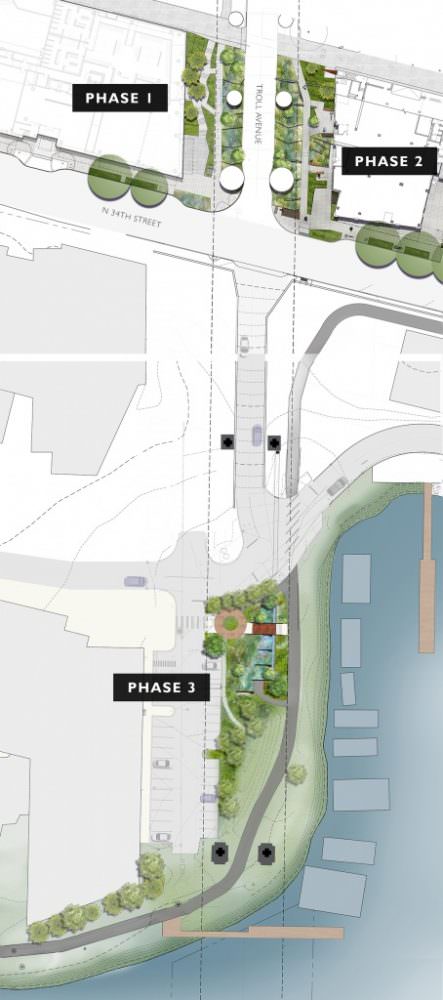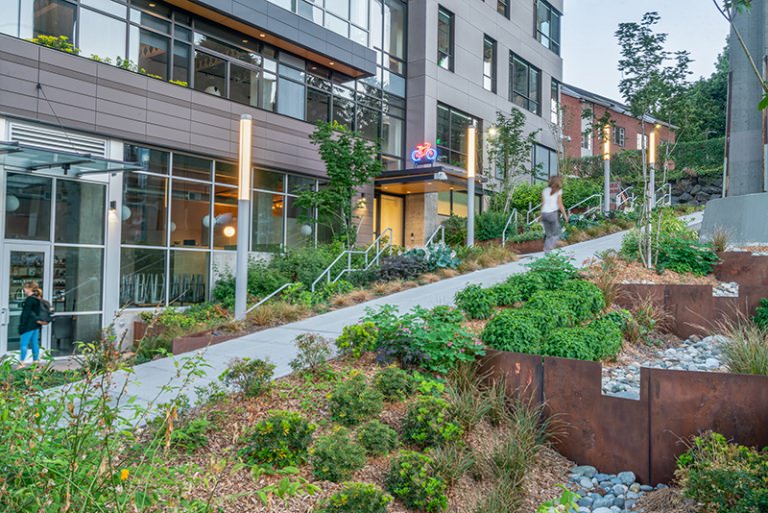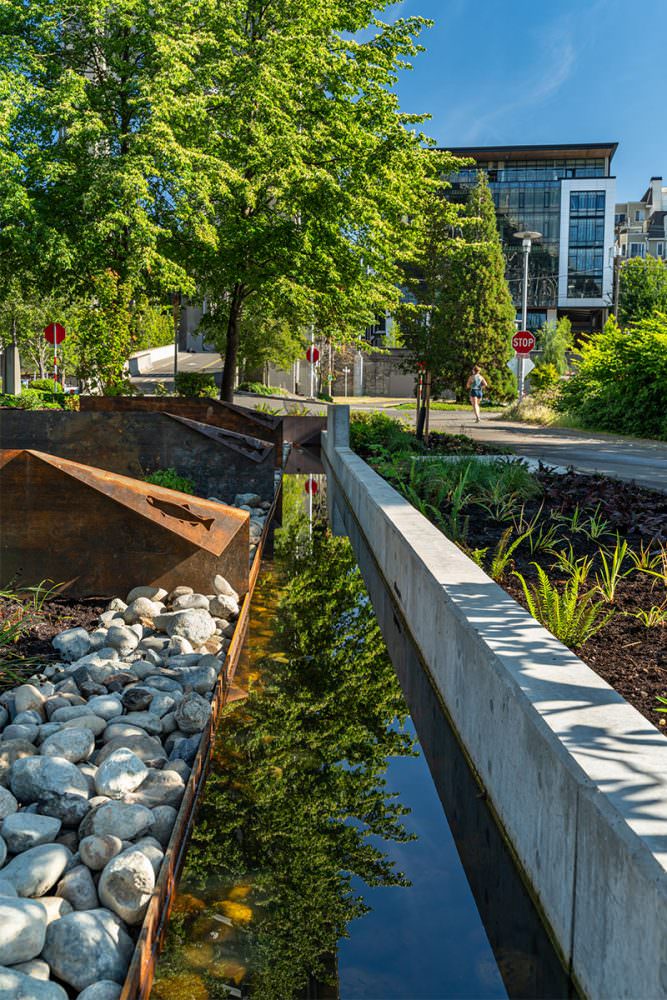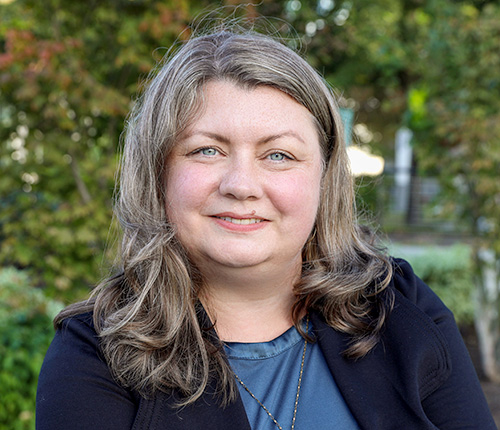By Rachael Meyer
Rachael Meyer, PLA, GRP, LEED AP, is principal of Landscape Architecture at Weber Thompson. She has extensive experience integrating living systems into the urban fabric and is a strong advocate for the effectiveness of natural stormwater systems in urban areas.
A massive stormwater cleanup effort in Seattle’s Fremont neighborhood is underway, and the second and third phases of the project are now complete. Dubbed the Aurora Bridge Bioswale Project, the effort includes three distinct phases of landscaping, each of which cleans toxic stormwater through Green Stormwater Infrastructure (GSI) principles. The three phases are located at the intersection of Troll Avenue N and N 34th Street in the Fremont neighborhood of Seattle.
The first phase was completed in 2017 as part of the DATA 1 commercial office project. The second phase is opposite from DATA 1 on Troll Avenue, as part of the Watershed commercial office project, and the third is a standalone project adjacent to the Burke Gilman Trail, a block away from the first two phases.

Aerial view of the three phases of the Aurora Bridge Bioswales Project located in Fremont.
These three installations will clean nearly two million gallons of toxic runoff from the Aurora Bridge annually. The effort is a collaboration between COU, LLC, a Seattle-based commercial office development entity, Weber Thompson’s landscape architecture studio, Turner Construction, Salmon-Safe, The Nature Conservancy and Clean Lake Union, a non-profit established to improve regional water quality issues.
The vision for the effort was born from the design process of DATA 1, a five-story, 195,000 gsf commercial office project at the corner of 34th Avenue and Troll Avenue in Seattle’s Fremont neighborhood, also developed by COU, LLC, and designed by Weber Thompson’s architecture and landscape design studios.

Phase 1 of the Aurora Bridge Bioswales Project located at DATA 1 along Troll Avenue // Photo by Builtwork Photography
While designing the project, the team learned that stormwater runoff from the Aurora Bridge, the historic roadway structure from 1932 that spans above the project site, was found to be six times as polluted as the national average for roadway runoff. Furthermore, this runoff was shown to be lethal to the region’s salmon, five species of which swim below the bridge during annual spawning runs.
Research from a WSU researcher showed that green stormwater infrastructure, such as bioswales, could neutralize the lethal effects of the pollution. Inspired by this knowledge, the Weber Thompson landscape team designed a series of stepped bioswales at the DATA 1 site that clean bridge runoff before diverting it back into nearby Lake Union. The project cleans 200,000 gallons of stormwater annually and has become the framework for future phases.
The second phase is now complete as part of the construction of the Watershed Office Building. Coupled with DATA 1, the first phase of the project, over 600,000 gallons of water are cleaned annually in these two phases.
The third phase, a larger swale sited adjacent to the Burke Gilman Trail, has also been installed. This phase was the vision of the non-profit Clean Lake Union, which was created to continue this stormwater work, in partnership with Salmon-Safe, and located on private property at the Fremont Lake Union Center.

Phase 1 of the Aurora Bridge Bioswales Project located at DATA 1 along Troll Avenue // Photo by Builtwork Photography
Funding and advocacy for the project has come from The Nature Conservancy and the Boeing Company. Funds from the State of Washington were also provided as a matching grant, to ensure continued progress and success of this innovative stormwater project.
All three of the completed phases have the capacity to clean nearly 2 million gallons of water annually. Clean Lake Union and the team that made these first phases possible don’t intend to stop there. Additional investigation has been completed to size and locate infrastructure for the five other bridges that cross Lake Union, in addition to the south span of the Aurora Bridge. The effort is called the Six Bridges Project, which seeks to mitigate over 117 million gallons of polluted runoff from entering Seattle’s central lake, Lake Union.
Additionally, a documentary about the work is underway as well. Learn more.
